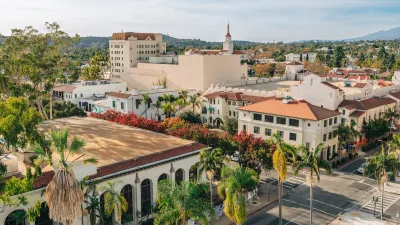A new report argues that city-owned lands must be leveraged to increase D.C.'s stock of affordable housing, and indicts Mayor Gray's administration for not doing enough to keep up with increasing demand.
A new report [PDF] from the Coalition for Smarter Growth argues that the vacant lots, aging schools, federal property, and other facilities acquired by the District of Columbia in the decades following the destructive 1968 riots should be put to use in service of providing affordable housing, as post-recession development increases.
According to John Muller, "[t]he report details where and how the District can make better use of
its ownership leverage to increase affordable housing opportunities on
public land. Where previous mayors made strong commitments to affordable
units in development projects on city land, Mayor Gray's administration
has been more lax."
"Our public lands are so valuable, and we're concerned the city
is not going to deliver the affordability that it's achieved in the
past," says Cheryl Cort, Policy Director for the Coalition for Smarter
Growth. "We urge the Mayor and the Housing Task Force to recommit to leveraging city-owned land to create a substantial amount of affordable housing, including at deeply affordable levels."
"DC has a shortage of affordable housing," says Muller, "but it has no shortage of
public land. The District needs to use this land to guarantee more
affordable housing so that we can remain an economically diverse city."
FULL STORY: DC public land must yield affordable housing, says report

Alabama: Trump Terminates Settlements for Black Communities Harmed By Raw Sewage
Trump deemed the landmark civil rights agreement “illegal DEI and environmental justice policy.”

Planetizen Federal Action Tracker
A weekly monitor of how Trump’s orders and actions are impacting planners and planning in America.

The 120 Year Old Tiny Home Villages That Sheltered San Francisco’s Earthquake Refugees
More than a century ago, San Francisco mobilized to house thousands of residents displaced by the 1906 earthquake. Could their strategy offer a model for the present?

In Both Crashes and Crime, Public Transportation is Far Safer than Driving
Contrary to popular assumptions, public transportation has far lower crash and crime rates than automobile travel. For safer communities, improve and encourage transit travel.

Report: Zoning Reforms Should Complement Nashville’s Ambitious Transit Plan
Without reform, restrictive zoning codes will limit the impact of the city’s planned transit expansion and could exclude some of the residents who depend on transit the most.

Judge Orders Release of Frozen IRA, IIJA Funding
The decision is a victory for environmental groups who charged that freezing funds for critical infrastructure and disaster response programs caused “real and irreparable harm” to communities.
Urban Design for Planners 1: Software Tools
This six-course series explores essential urban design concepts using open source software and equips planners with the tools they need to participate fully in the urban design process.
Planning for Universal Design
Learn the tools for implementing Universal Design in planning regulations.
Clanton & Associates, Inc.
Jessamine County Fiscal Court
Institute for Housing and Urban Development Studies (IHS)
City of Grandview
Harvard GSD Executive Education
Toledo-Lucas County Plan Commissions
Salt Lake City
NYU Wagner Graduate School of Public Service





























